Chinese chicken curry is incredibly delicious and addictive when served with steamed rice.
This recipe is an easy Chinese curry commonly cooked by Malaysian Chinese at home. It differs slightly from Malay and Nyonya-style curry chicken, and it offers the same flavor found in Chinese restaurants in Malaysia.
It is suitable for the whole family to enjoy as I make it less spicy by removing the red chili seeds and not using bird’s eye chilies, chili powder, or dried chilies.
Note: This post may contain affiliate links. Please read my privacy policy for more info. I may receive commissions for purchases made through links in this post. As an Amazon Associate, I earn from qualifying purchases.
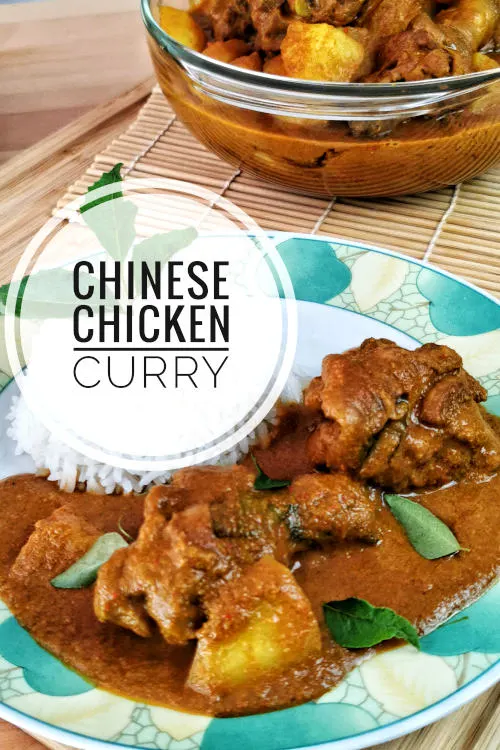
🛒Ingredients needed for Chinese chicken curry
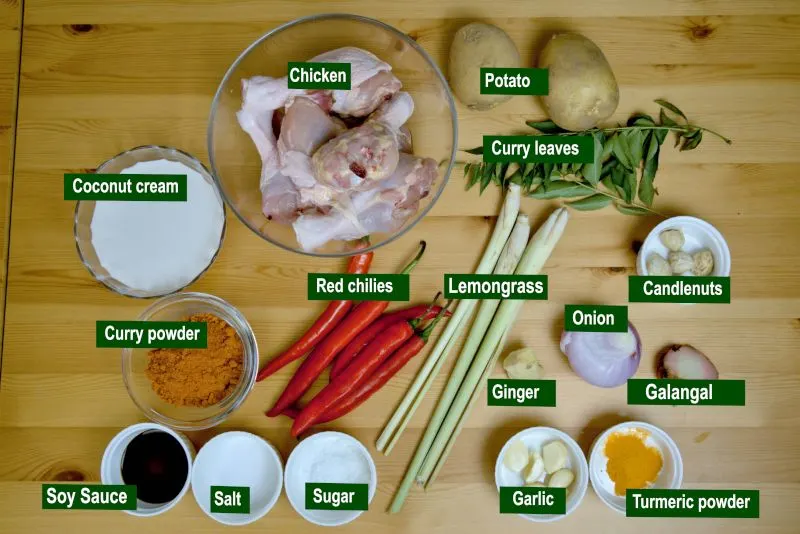
- Chicken. Use bone-in, skin-on chicken chunks to make curry.
- Potato. Potato is the favorite ingredient for making curry because it acts as a sponge, absorbing whatever flavor and making it exceptionally tasty. I like to eat the potatoes more than the chicken itself!
- Local spices. There are a few local ingredients that you may be familiar with, such as garlic, ginger, turmeric, and onion. One of the least commonly used ingredients in Western cuisine is galangal. Unfortunately, galangal cannot be substituted with ginger, as the flavor differs.
- Curry powder. I used Malaysian curry powder to give the dish an authentic Malaysian flavor. You can substitute it with Indian curry powder, which has a similar combination of spices but is not exactly the same. If you want to make your Malaysian curry powder, please read on, as I have included the recipe in the following section.
- Curry leaves. Another required ingredient is curry leaves, widely used in Indian cuisine and has become very popular in Malaysia. They are readily available in Malaysia, but I understand they may not be available elsewhere. You may have to forego using them if you cannot get them.
- Candlenuts. The primary use of candlenut is to thicken the gravy. If it’s not available, you can use cashews as a substitute.
- Coconut cream. Coconut cream is commonly used to enhance the flavor and provide a creamy texture to the curry. Make sure to use coconut cream specifically meant for cooking and not coconut milk for drinking.
- Others. Some less common ingredients are used for cooking Chinese-style curry, but not in Malaysia. You can add frozen peas, red pepper, and snow peas (green peas).
👉 How to make Chinese chicken curry (Malaysian style)
Here are the detailed steps on how to prepare Chinese chicken curry.
A. Preparation
1. Cut the chicken thighs into large chunks, bone-in and skin-on. Please ask your chicken vendor to do it for you, as they have a sharp knife that can easily cut through the bones. Marinate the chicken pieces with light soy sauce and salt, preferably for half a day, to ensure the flavor penetrates the meat’s inner part.
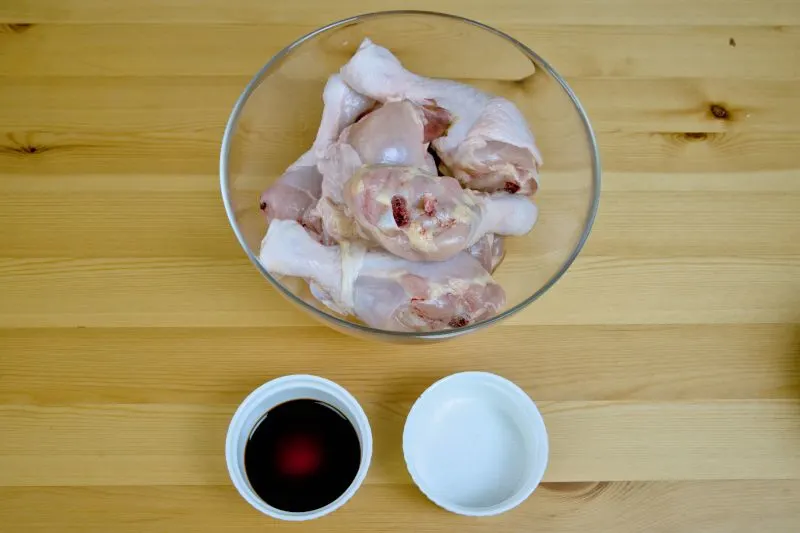
2. Cut the onions into large chunks. Here is where you can control the thickness of the gravy. Use more onions if you prefer a thicker gravy.
3. Preparation for the gravy (1): Peel a few garlic cloves. Chop a piece of thumb-size ginger with the skin removed. Cut the galangal into thin slices. It is much harder than ginger and, therefore, needs to be cut thinly to be blended into a paste effectively. Remove the skin of the turmeric.
4. Preparation for the gravy (2): Bash the lemongrass and remove the green section and the fibrous outer layer. Next, cut the inner bulb, which is more tender, into thin slices. Remove the seeds of the chilies and cut them into small pieces. Crush a few candlenuts.
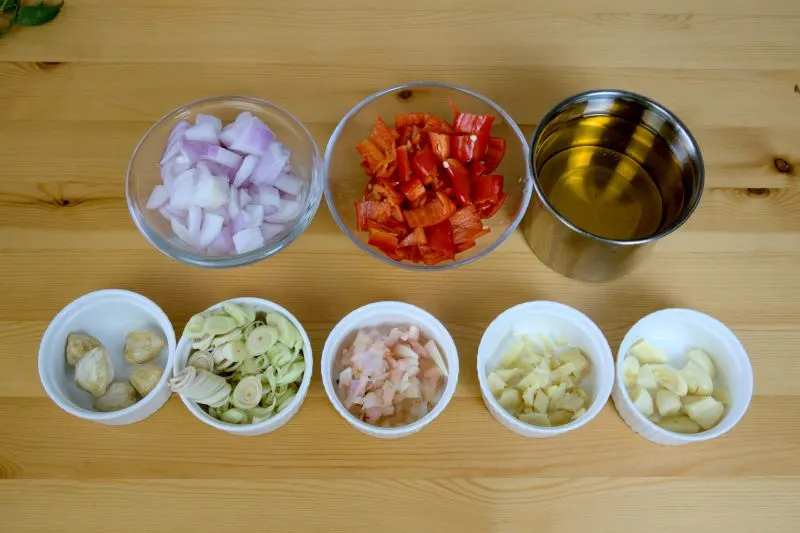
5. Place all the ingredients in a food processor or blender. Then, blend a few tablespoons of peanut oil into a paste. If it is too dry to blend, you may need to add a few tablespoons of water.
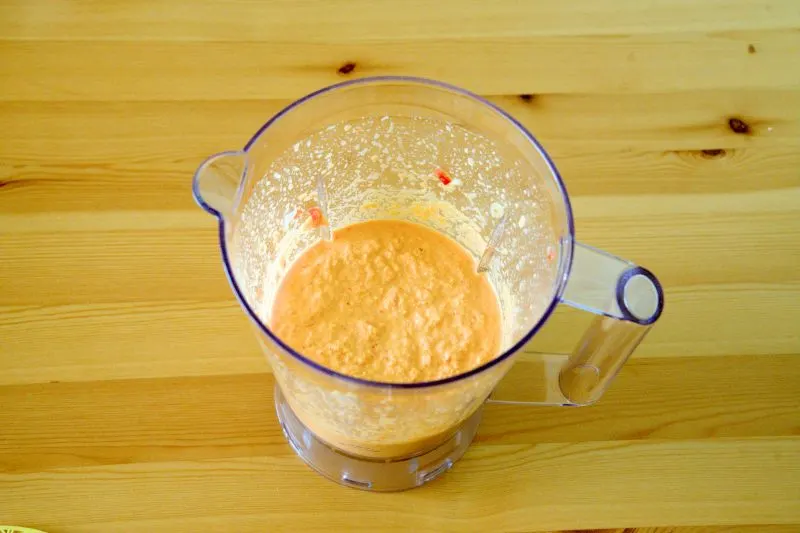
B. Cooking
1. Heat 3 tablespoons of oil in the wok. Pour the blended ingredients into the wok and saute over low heat.
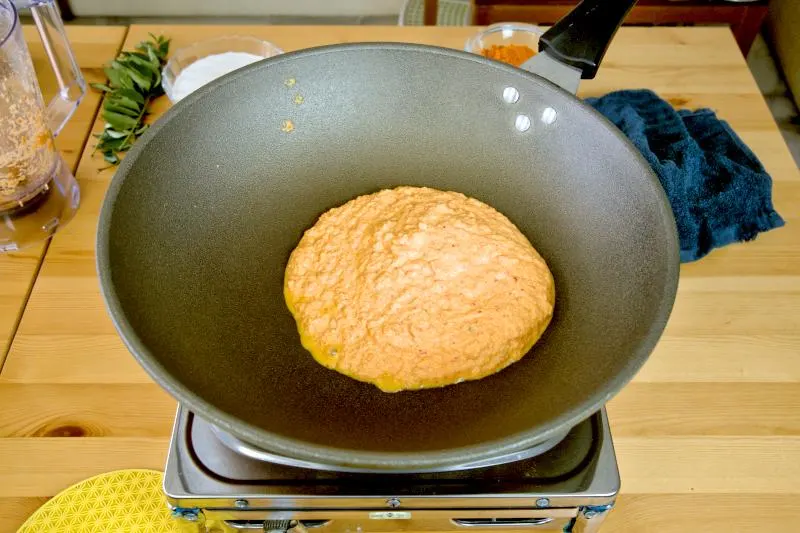
2. The water will slowly evaporate, making the paste thicker and darker. If you use more oil, it will eventually separate from the paste when it dries out. The oil was not separate when I cooked because I used less to make the curry. It is healthier to make curry this way.
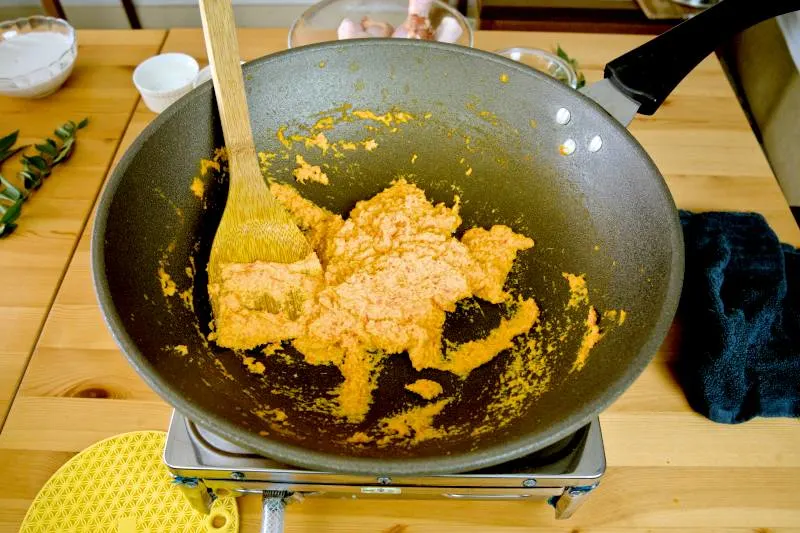
3. Add the curry leaves and curry powder.
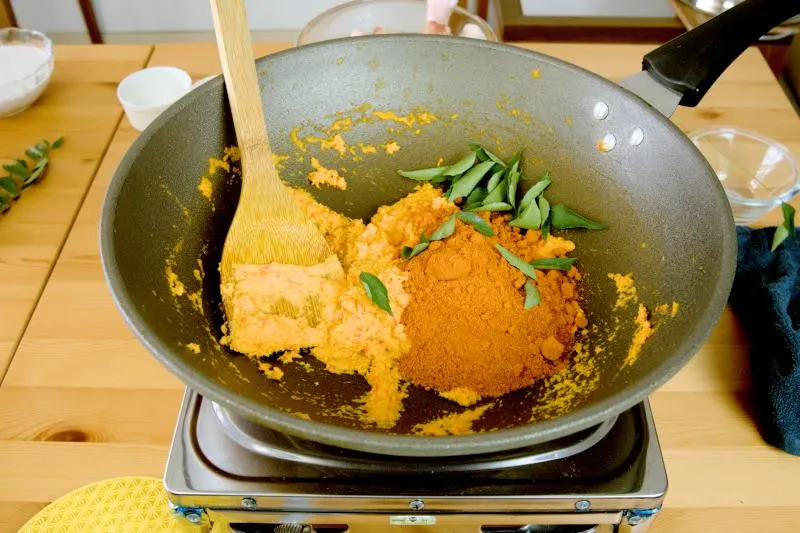
4. Add the marinated chicken to the wok.
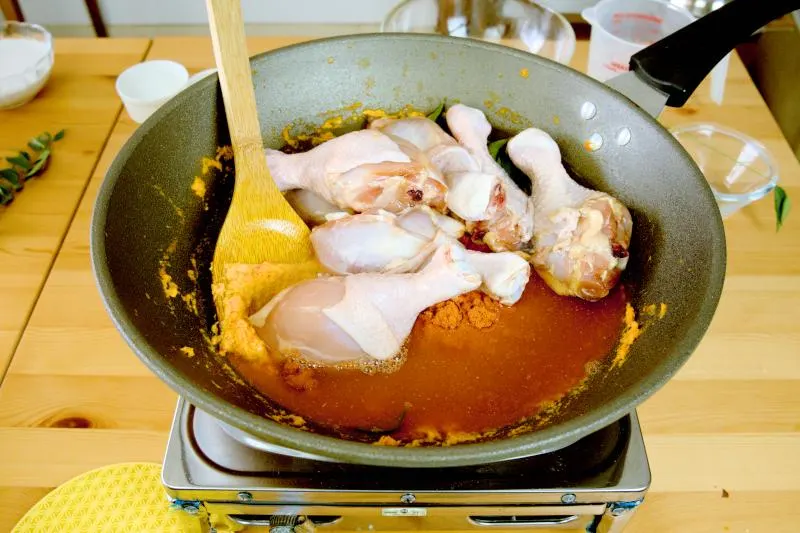
5. Add about 1.5 cups of water to dilute the curry paste to become a gravy. Bring the gravy to a medium-high boil, then reduce the heat to barely simmer and cook for ten minutes. Add the potatoes.
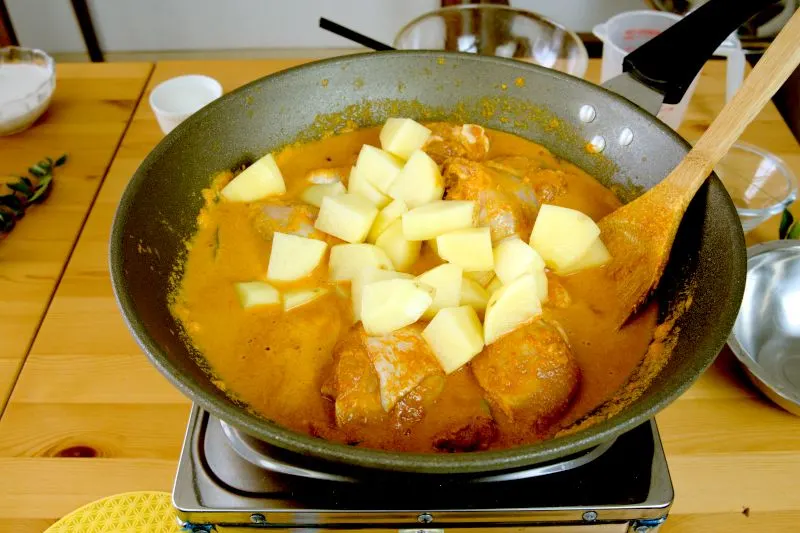
6. Finally, include the coconut cream and bring the curry to a boil. Continue cooking over low heat until the potatoes are tender, about twenty minutes.
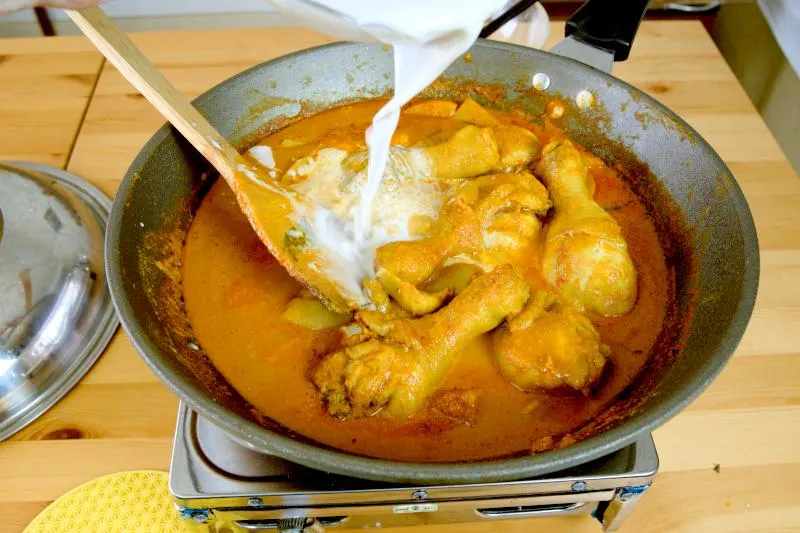
7. Season with sugar and salt to taste. Serve.
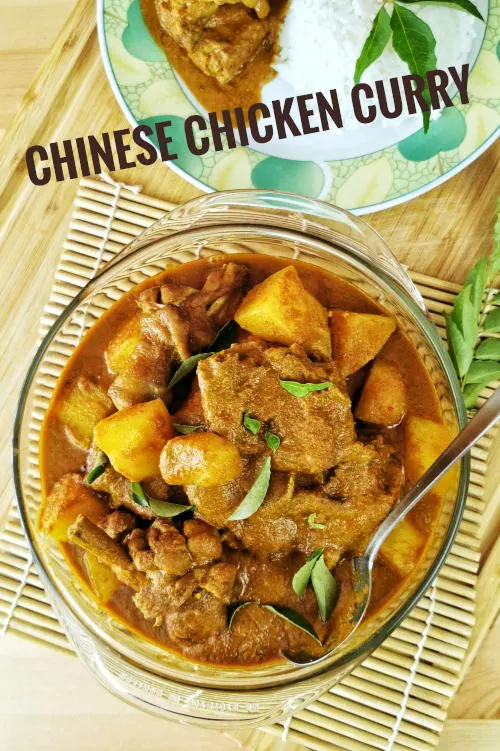
💡Tips and notes for the best Chinese curry chicken
Please take a moment to read the following note. It’s a bit lengthy, but it covers all the important aspects to ensure you get the best results.
- You can use boneless chicken breasts to prepare the curry if you prefer boneless. However, the flavor is not as good as the bone-in chicken because the bone imparts flavor to the curry gravy during cooking. You can get around this shortfall by adding store-bought chicken stock while cooking.
- If you do not marinate the chicken long enough, you can leave the chicken in the gravy after cooking for a few hours before serving. This step gives the flavor enough time to penetrate deep into the meat.
- You can use shallots instead of onions. However, it needs more time to peel the shallots; therefore, onions are used regularly in most restaurants.
- Olive oil is unsuitable for making this curry as the taste is not authentic to Malaysian Chinese curry. Instead, I suggest using peanut, corn, or palm oil to cook the curry.
- Deep-frying the chicken pieces before stewing with the curry paste is optional. However, it is a worthy step as the golden brown chicken pieces taste better after cooking. We deep-fry the chicken in the restaurant instead of stir-frying to speed up the cooking process. After deep-frying, we leave the chicken on paper towels to absorb the excess oil. Alternatively, you may use a non-stick pan to pan-fry it at home, which requires less oil.
- You can use turmeric powder as a substitute for fresh turmeric.
- The Chinese curry sauce is less spicy than the Malay and Indian curries. You can reduce the curry’s heat by removing the chilies’ seeds and piths. This method is much better than cutting down the number of chilies, resulting in less chili flavor. If you still find that it is too spicy, substitute half the red chilies with red bell pepper.
- It is better to blend these ingredients longer to ensure that it turns into a smooth paste. Galangal and lemongrass are hard and take time to get crushed in the blender.
- Candlenuts help thicken the curry. Otherwise, you can use cashew nuts as a substitute. The authentic Malsyain Chinese curry is thickened with crushed candlenuts. Cornstarch slurry is not suitable as the thickener for this curry.
- Stewing the chicken with high heat is not recommended as it will toughen the meat. Instead, cooking it at low heat will ensure you get tender chicken. That means you can also transfer the curry to the slow cooker to simmer instead of on the stovetop.
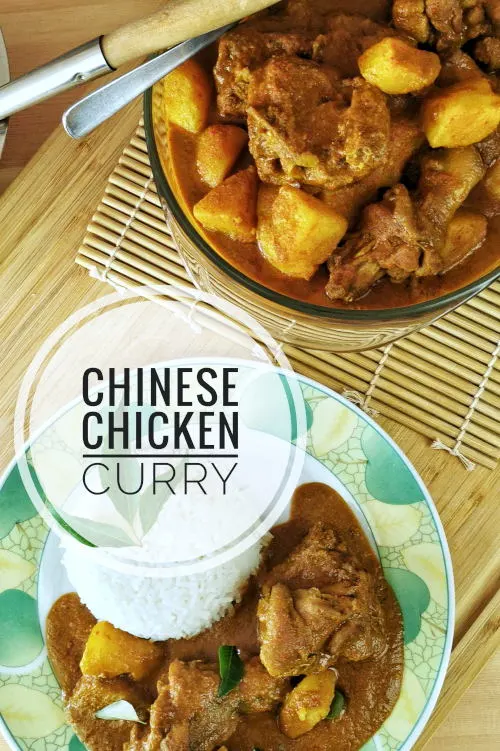
❓How to make the Malaysian curry powder (read this if you want to make it from scratch)
The flavor of the curry is mainly from Malaysian curry powder. I use the Baba brand meat curry powder, which is relatively mild. You can get it online from Amazon or make the curry powder by following the recipe below:
Ingredients: 4 dried red chilies, 4 cardamom pods, 1 cinnamon stick (5cm length), 4 tbsp of coriander seeds, 2 tbsp of cumin seeds, 2 tsp of fennel seeds, 10 cloves, 10 black peppercorns, and 1 tsp of turmeric powder. Method: Blend all the ingredients into powder.
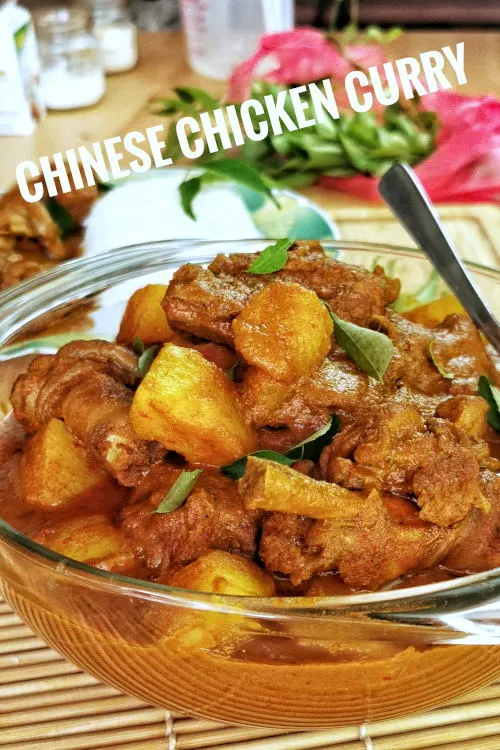
I strongly suggest making this delicious curry for your family dinner or enjoy with friends. Make sure you get ready more white rice, which acts as a blank canvas that absorbs all the flavor from the curry gravy. Enjoy 🙂
📃 Other curry recipes you will like
The vegetable curry recipe is the most popular curry recipe on this food blog. Click here to read more.
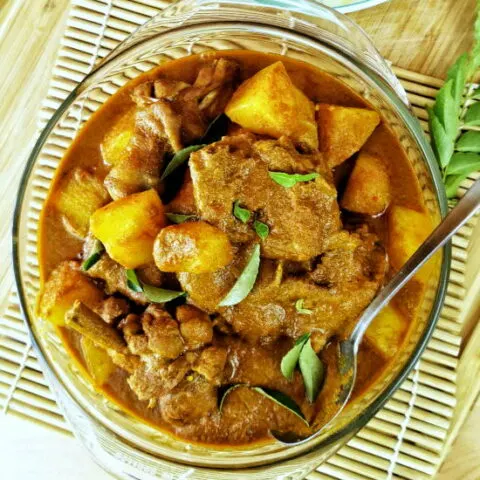
Chinese Chicken Curry Recipe
Chinese chicken curry in this article is incredibly delicious and can be addictive when served with steamed rice.
This recipe is an easy Chinese curry influenced by the Malaysian cooking style. It is slightly different from the Malay and Nyonya style curry chicken, and you will expect the same flavor from the Chinese restaurants in Malaysia.
Ingredients
A (marinate the chicken)
- 1kg chicken bone-in, skin-on thighs
- 2 tsp light soy sauce
- 2 tsp salt
B (ingredients to be blended)
- 2 medium-size onions
- 4 cloves of garlic
- 15g ginger
- 20g galangal
- 10g turmeric
- 3 lemongrass
- 5 red chilies (100g)
- 5 candlenuts
C (others)
- 2 tbsp of peanut oil
- 4 tbsp Baba brand Malaysian curry powder
- 1 stalk of curry leaves
- 500g potatoes
- 200ml coconut cream
- 1 tsp sugar
- 1/2 tsp salt
Instructions
Preparation
- Cut the chicken thighs into large chunks, bone-in and skin-on.
- Marinate the chicken pieces with light soy sauce and salt for half a day.
- Cut the onions into large chunks.
- Peel a few cloves of garlic.
- Chop a thumbs size ginger with skin removed.
- Cut the galangal into thin slices.
- Remove the skin of the turmeric.
- Bash the lemongrass, and remove the green section and the fibrous outer layer. Next, cut the inner bulb that is more tender into thin slices.
- Remove the seeds of the chilies, and cut them into small pieces.
- Crush a few candlenuts
- Blend all the ingredients in the blender by adding a few tablespoons of peanut oil and some water.
Cook the curry
- Heat 3 tablespoons of oil in the wok. Fry the blended ingredients over low heat until it becomes very dry.
- Add the curry leaves, curry powder, and marinated chicken.
- Add about 1.5 cups of water to simmer at low heat for ten minutes.
- Add the potatoes and the coconut cream and bring the curry to a boil.
- Continue cooking over low heat until the potatoes are tender, about twenty minutes.
- Season with sugar and salt to taste.
Recommended Products
As an Amazon Associate and member of other affiliate programs, I earn from qualifying purchases.
-
 Dried Curry Leaves | Aromatic and Distinctive Flavor | With All the Flavor of Fresh Leaves | Kari Patta 1.5 oz.
Dried Curry Leaves | Aromatic and Distinctive Flavor | With All the Flavor of Fresh Leaves | Kari Patta 1.5 oz. -
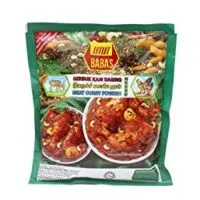 BABA Meat Curry Powder 500g - 17.64oz
BABA Meat Curry Powder 500g - 17.64oz -
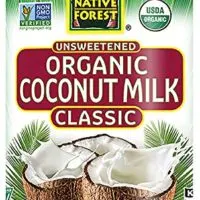 Native Forest Organic Classic Coconut Milk, 13.5 Ounce Cans (Pack of 12),Packaging may Vary
Native Forest Organic Classic Coconut Milk, 13.5 Ounce Cans (Pack of 12),Packaging may Vary -
 Ninja Professional 72 Oz Countertop Blender with 1000-Watt Base and Total Crushing Technology for Smoothies, Ice and Frozen Fruit (BL610), Black
Ninja Professional 72 Oz Countertop Blender with 1000-Watt Base and Total Crushing Technology for Smoothies, Ice and Frozen Fruit (BL610), Black
Nutrition Information:
Yield: 4 Serving Size: 1Amount Per Serving: Calories: 1384Total Fat: 80gSaturated Fat: 25gTrans Fat: 0gUnsaturated Fat: 49gCholesterol: 277mgSodium: 1927mgCarbohydrates: 97gFiber: 10gSugar: 42gProtein: 78g
This data was provided and calculated by Nutritionix on 21/6/2022

Jenny
Sunday 22nd of September 2024
Hi KP, there is a popular Malaysian A1 curry paste. Can I use that instead . P.s. I have been using many of your recipes for 2 years now. Thanks a lot.
KP Kwan
Monday 23rd of September 2024
Yes you can use that. Another option thay I use is the Baba brand Meat Curry Powder.
Roger
Friday 12th of August 2022
Hi KP, Love this recipe, is it suitable for a slow cooker and if so what size do you recommend. Looking forward to trying more of your recipes!
KP Kwan
Sunday 14th of August 2022
Sure, you can use a slow cooker to save time.
Jean
Saturday 9th of July 2022
Hi KP, I enjoy reading through all your recipes. I recently made your Malaysian Chicken Curry and it was awesome! Thank you so much for sharing all your wonderful recipes
KP Kwan
Tuesday 12th of July 2022
Hi Jean, It is my pleasure to share. Thanks for following my blog, and I hope you enjoy cooking these dishes. KP Kwan
KP Kwan
Thursday 23rd of June 2022
Hi, this is KP Kwan. I am happy to see you in this comment area, as you have read through my recipe. I am glad to reply to any questions and comments as soon as possible.
Raymond
Saturday 25th of June 2022
@KP Kwan, What type of onions are medium size onions? are you referring to shallots type or those big purple onions used to make egg omelette, big onion egg?